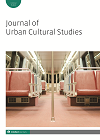
Full text loading...

This article examines how the disciplinary technologies of land use, zoning laws, immigration policy and urban renewal were utilized in the creation of LA Plaza de Cultura y Artes (LAPCA), Los Angeles’s first museum dedicated to Mexican American arts. I analyse the methods used by LAPCA’s founders, curators and city planners who have deployed the museum’s location adjoining the city’s historic Plaza to situate this institution within the symbolic and spatial jurisdiction of a historic place. In this case study, I begin with an exploration of the earliest foundations of ethnic tourism in Los Angeles’s historic Plaza district to situate LAPCA within a long history of governmental interventions used to create and reframe Los Angeles’s ethnic cultural spaces. I draw upon two theoretical strands – Foucauldian governmentality and Henri Lefebvre’s dialectic of urban implosion/explosion – as my primary tools of genealogical critique. In this article I provide new practical applications for using governmentality as a lens through which we can examine how the ensemble of administrative techniques and procedures used in the governance of populations shape the spaces they inhabit.

Article metrics loading...

Full text loading...
References


Data & Media loading...

Publication Date:
https://doi.org/10.1386/jucs_00069_1 Published content will be available immediately after check-out or when it is released in case of a pre-order. Please make sure to be logged in to see all available purchase options.